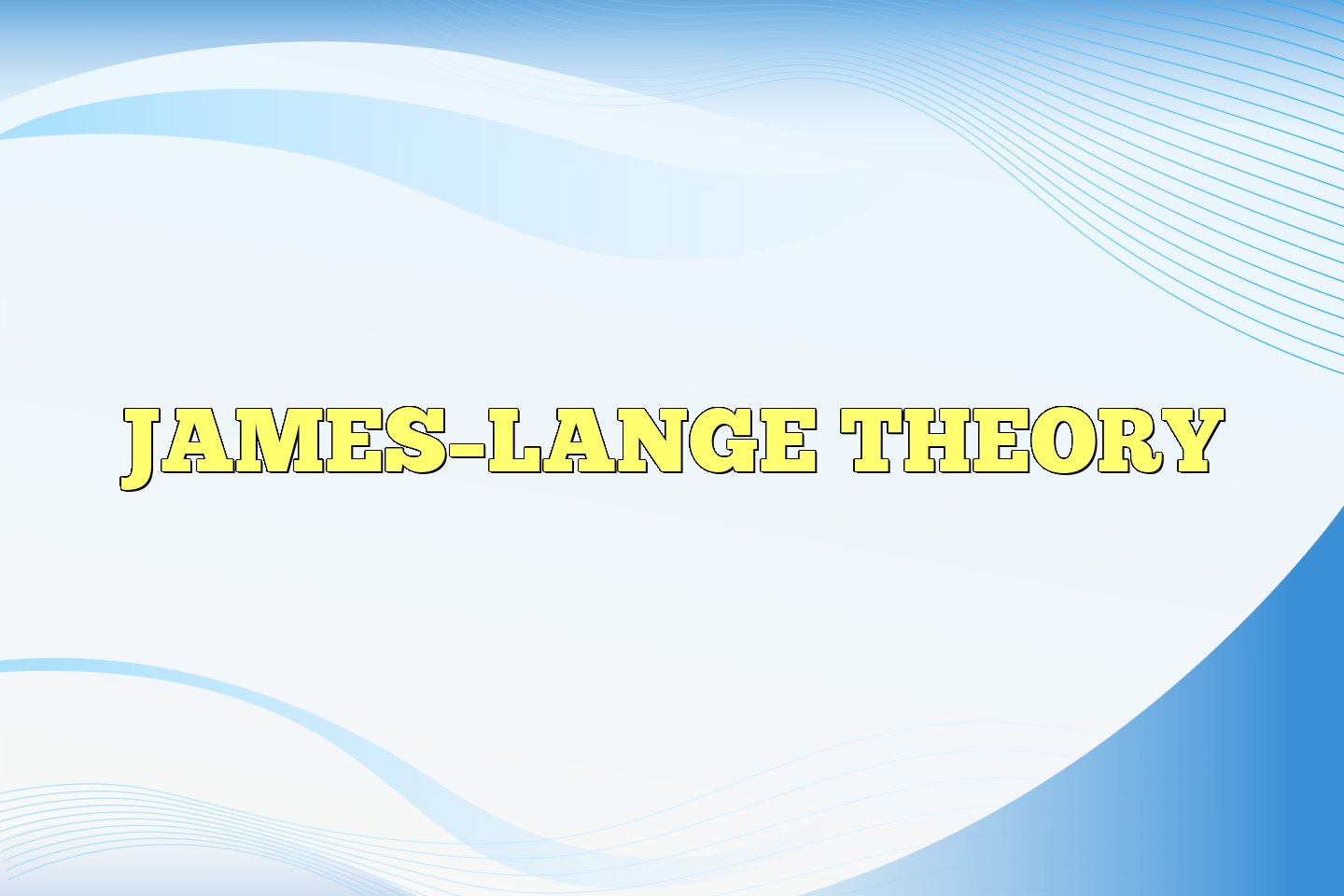The James-Lange Theory is one of the earliest and most influential theories in the study of emotions. Developed by psychologist William James and physiologist Carl Lange in the late 19th century, it proposes that emotions are a result of physiological responses to external stimuli. This theory suggests that our emotions are not just mental states, but also physical reactions to our environment. In other words, our physiological responses, such as increased heart rate or sweating, come first and then trigger the corresponding emotion. In this essay, we will delve deeper into the James-Lange Theory and explore how it explains the complex relationship between our emotions and physiological responses.

The James–Lange theory refers to a hypothesis on the origin and nature of emotions and is one of the earliest theories of emotion, developed independently by two 19th-century scholars, William James and Carl Lange.
Overview
This theory states that within human beings as a response to experiences in the world, the autonomic nervous system creates physiological events such as muscular tension, a rise in heart rate, perspiration, and dryness of the mouth. Emotions, then, are feelings which come about as a result of these physiological changes, rather than being their cause. James and Lange arrived at the theory independently. Lange specifically stated that vasomotor changes are emotions. (Ex. A person rationalizes that because he/she is crying, he/she must be sad.) James elucidated his concept as:
“My theory … is that the bodily changes follow directly the perception of the exciting fact, and that our feeling of the same changes as they occur is the emotion. Common sense says, we lose our fortune, are sorry and weep; we meet a bear, are frightened and run; we are insulted by a rival, are angry and strike. The hypothesis here to be defended says that this order of sequence is incorrect … and that the more rational statement is that we feel sorry because we cry, angry because we strike, afraid because we tremble … Without the bodily states following on the perception, the latter would be purely cognitive in form, pale, colorless, destitute of emotional warmth. We might then see the bear, and judge it best to run, receive the insult and deem it right to strike, but we should not actually feel afraid or angry.”
This order of causality is a difficult one. The theory has been largely disfavored in modern times. Some evidence to support it, however, may come from the fact that sufferers of various psychological challenges such as panic disorders often experience psychoemotional trauma after physiological responses arise in the body, responses which individuals are conditioned to associate with a particular emotional state but which can, via therapy, be dissociated.
This theory was challenged in the 1920s by psychologists such as Walter Cannon and Philip Bard, who theorized that physiological changes are caused by emotions (collectively known as the Cannon-Bard theory of emotion).
The third theory of emotion is Schachter & Singer’s two factor theory of emotion. This theory states that cognitions are used to interpret the meaning of physiological reactions to outside events.
Criticisms
- The viscera are largely unresponsive and react relatively slowly (i.e. – we ‘feel’ the emotion before the physiological changes have occurred.)
- Cutting nerves from the viscera has no effect on emotions in rats.
- Visceral responses are the same no matter what the reported emotion.
- Injecting adrenaline/epinephrine (as in released from the adrenal glands during “normal” emotional state) does not induce the feeling of an emotion, only your moods.
- A double dissociation has been found for autonomic nervous system responses between those with injuries to the ventromedial prefrontal cortex that have the feelings not the responses, and those with injuries to the right somatosensory cortex that lack the feelings but not the responses.